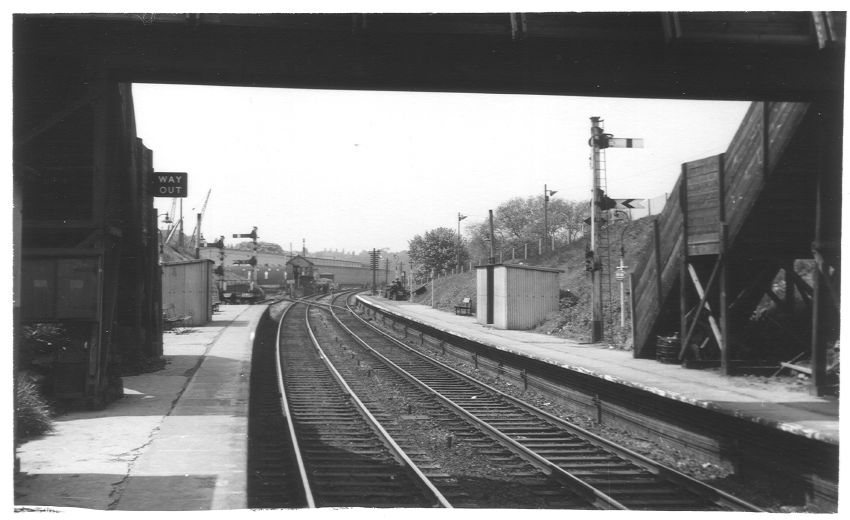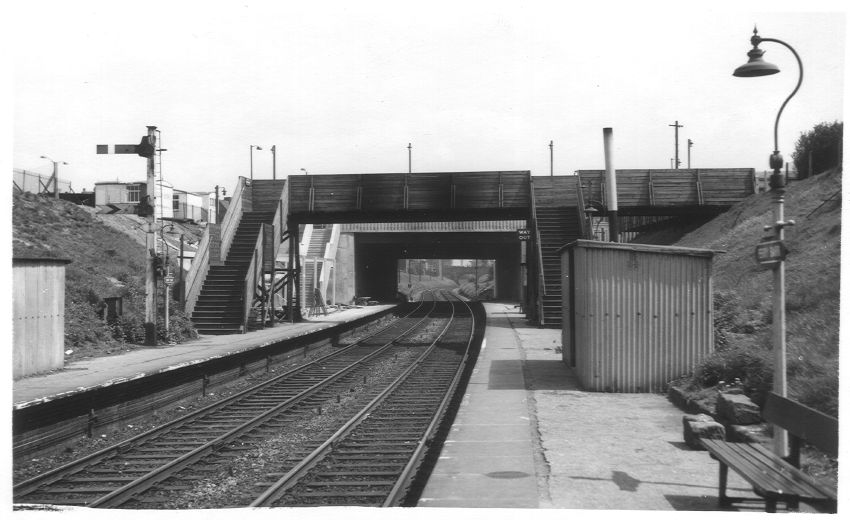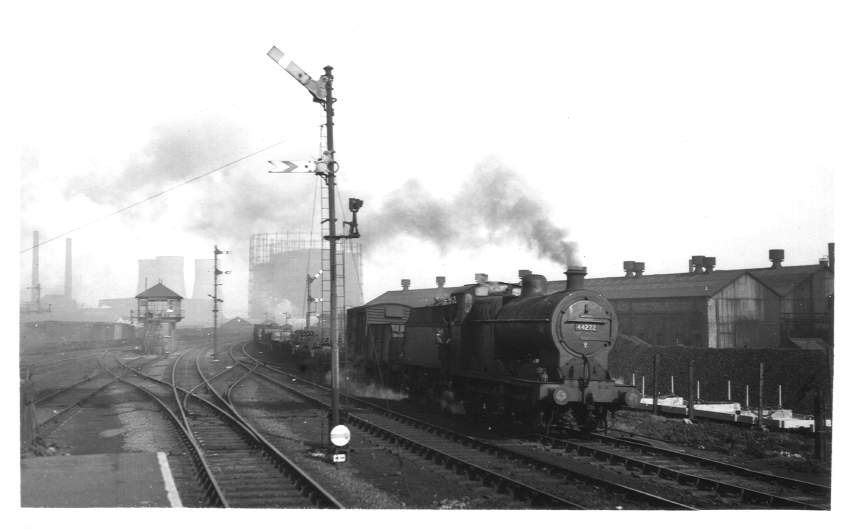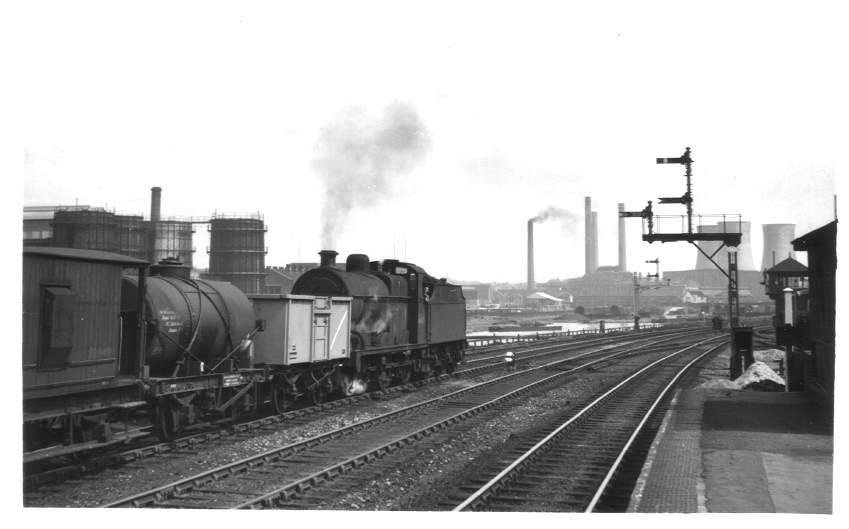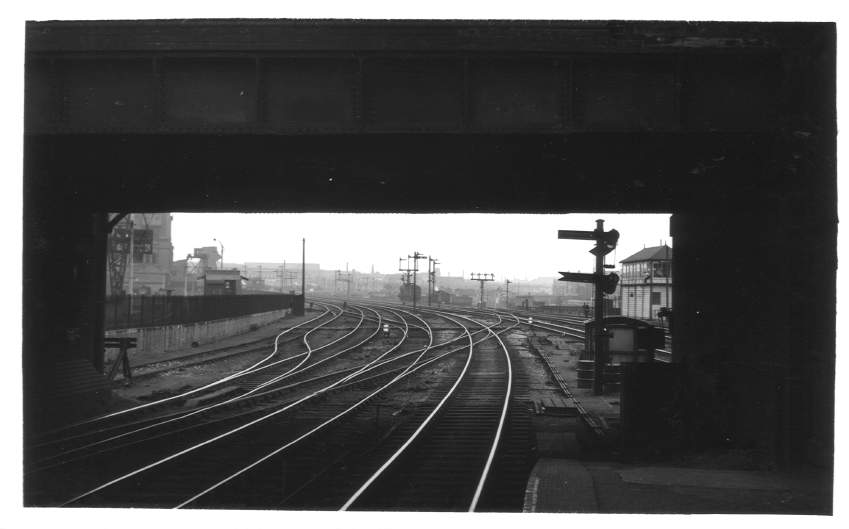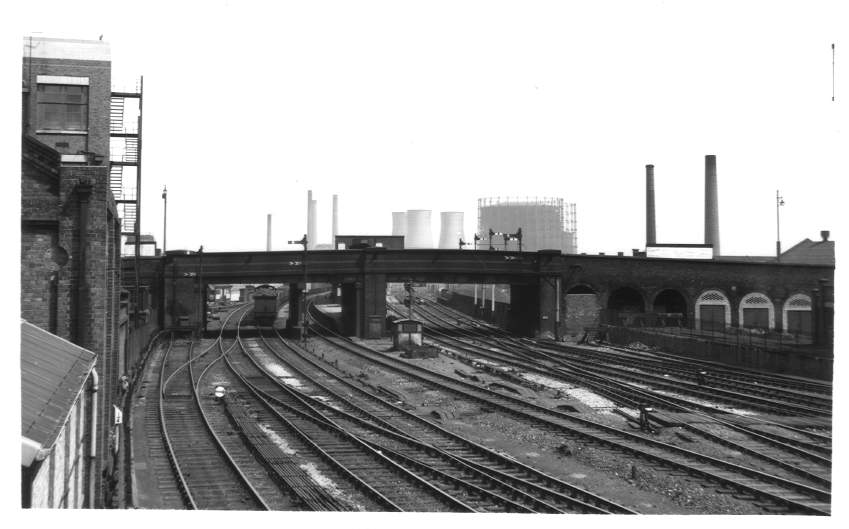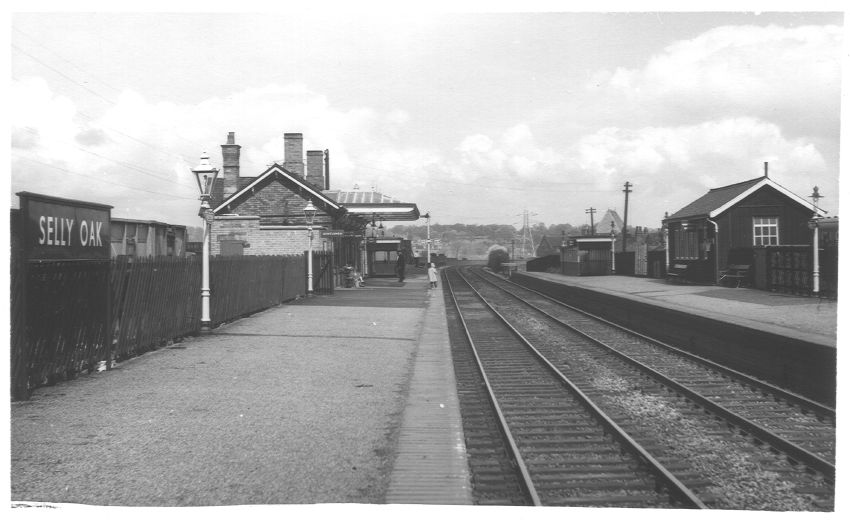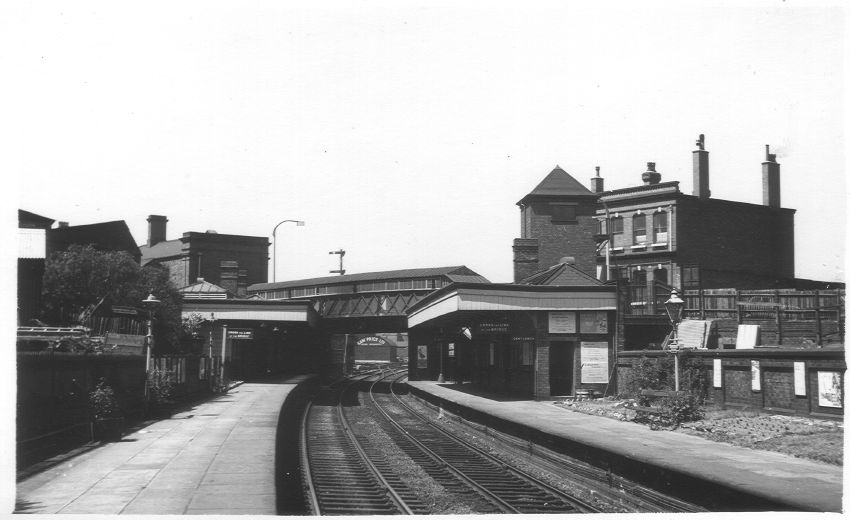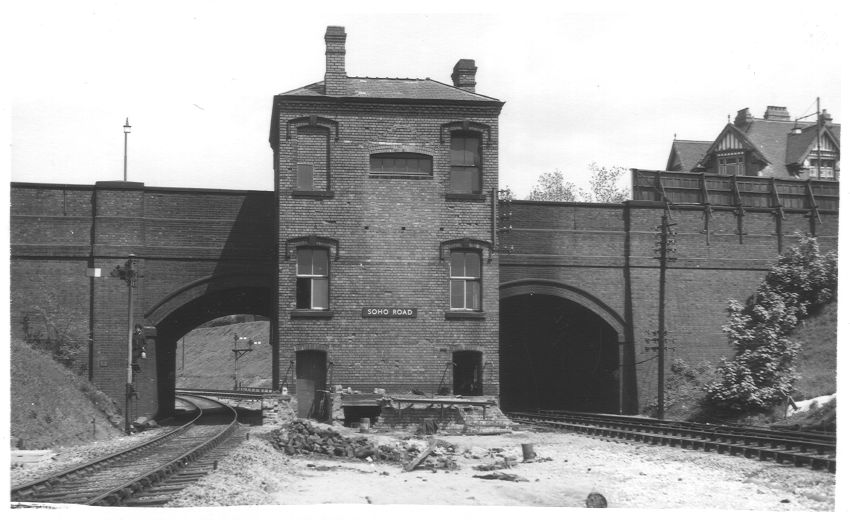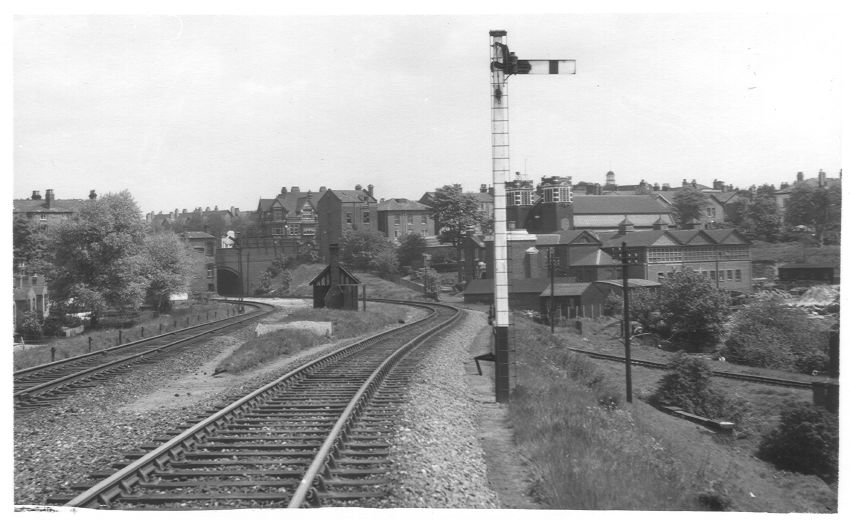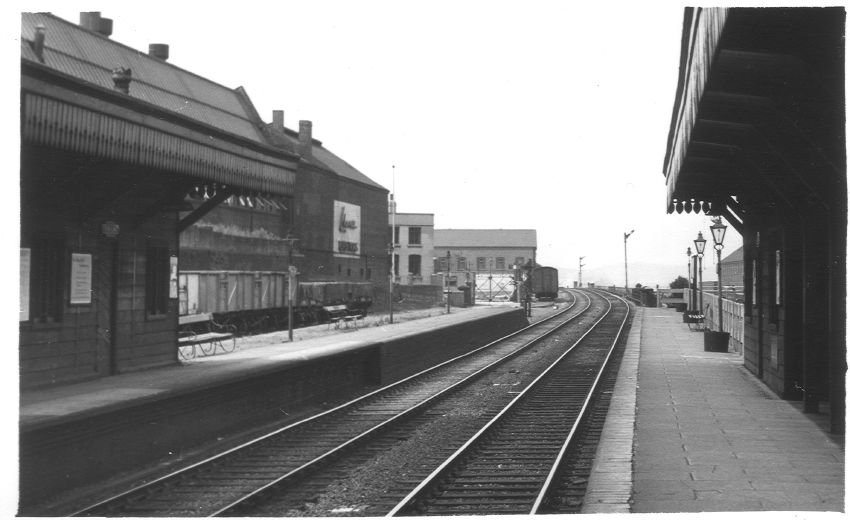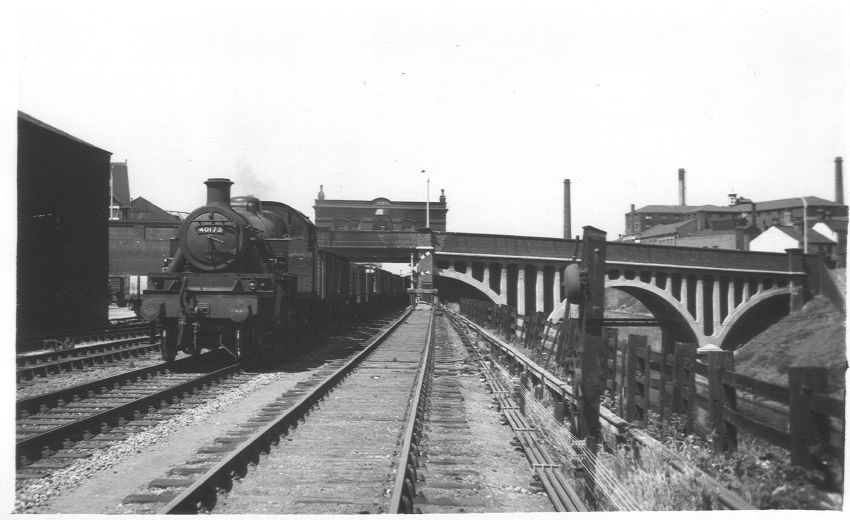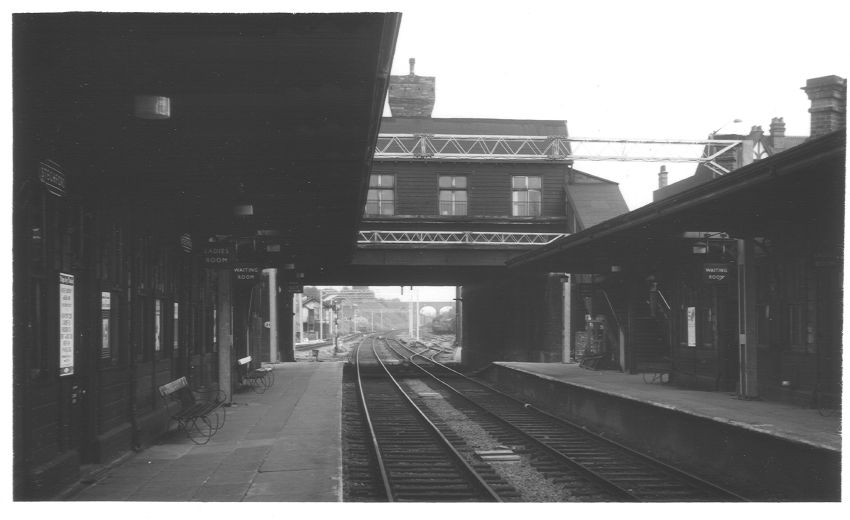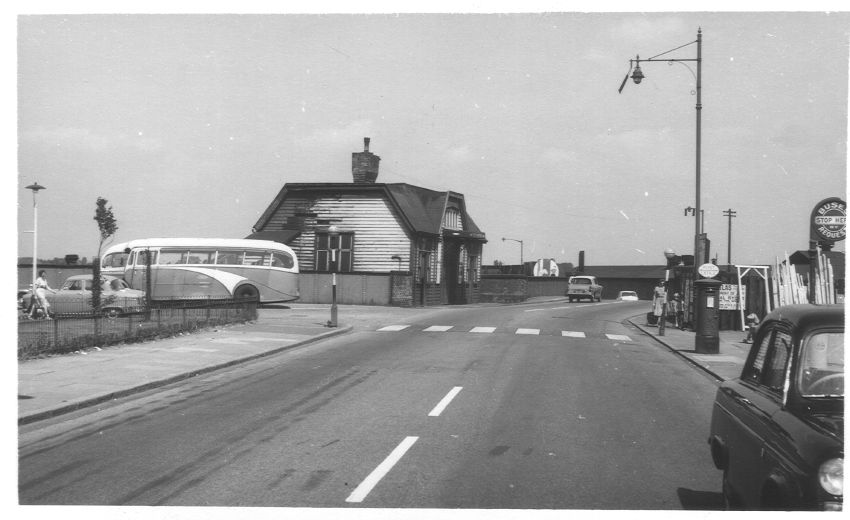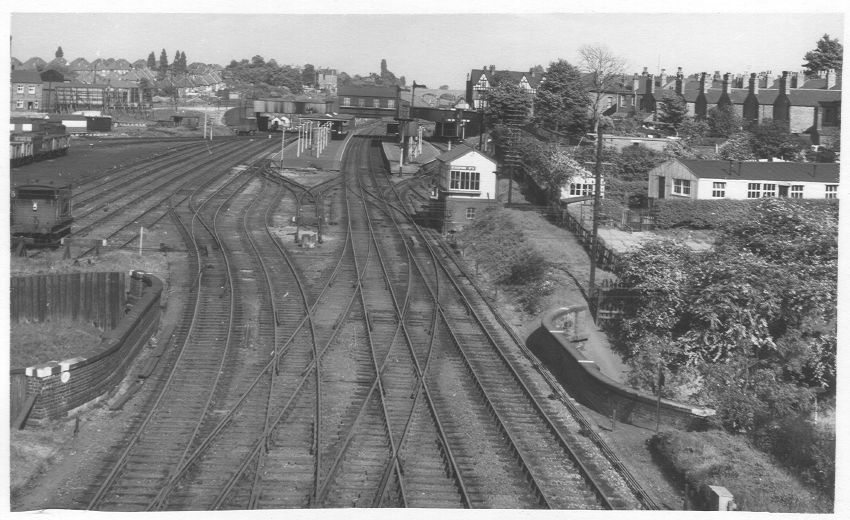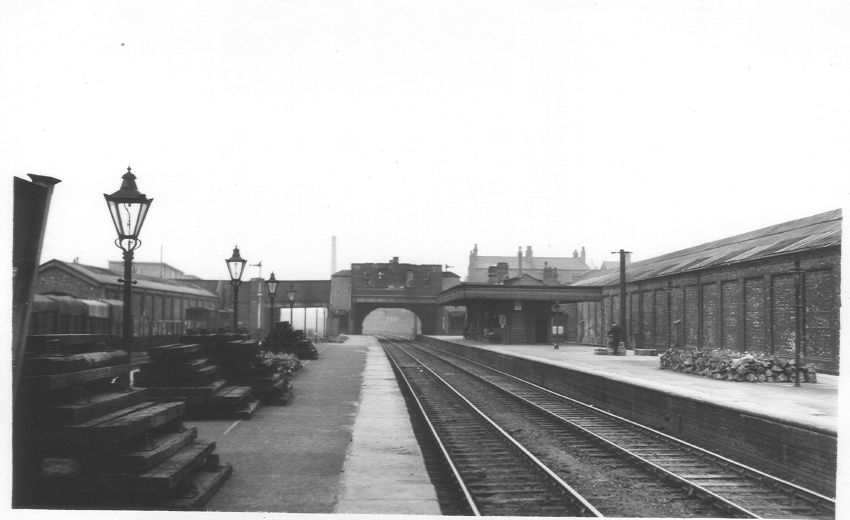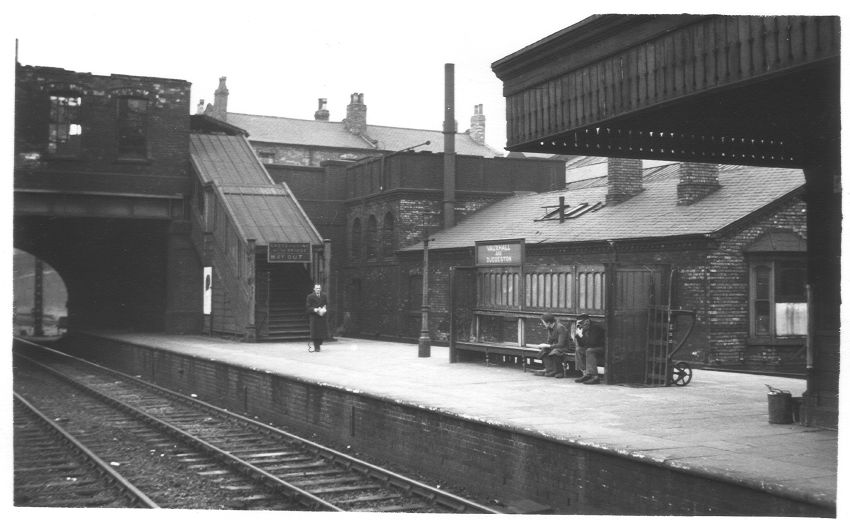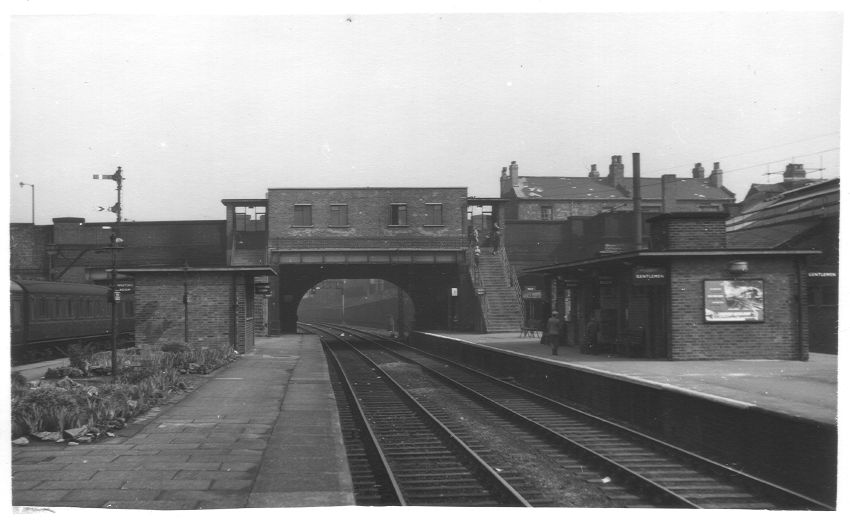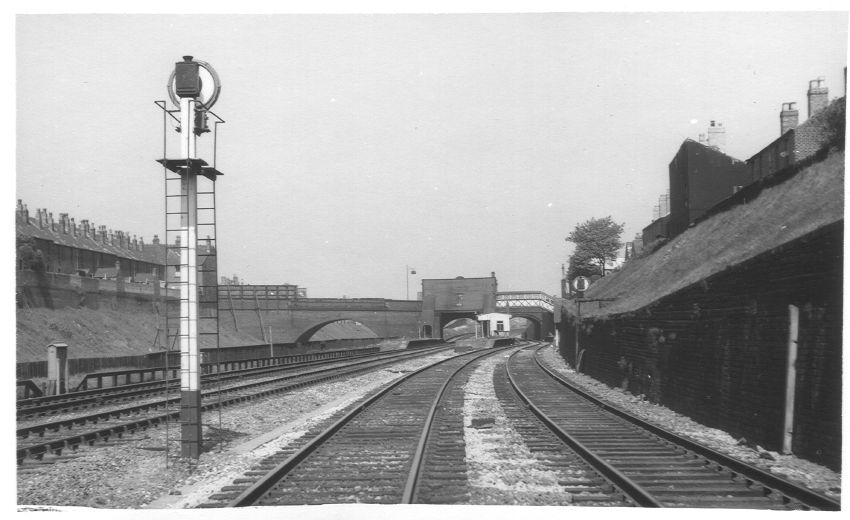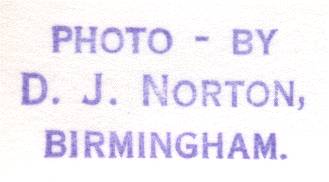
Birmingham and Local Stations P-Z
Covers Perry Barr, Saltley,
Selly
Oak, Smethwick (Rolfe Street), Soho Road, Spon Lane, Stechford, Vauxhall &
Duddeston and Winson GreenMove cursor over pictures for more information
Perry Barr
|
|||
|
|||
| This must be the only station
where the old buildings are worse than the current ones! It
almost looks temporary... My suspicion is that the extensive
redevelopment of the roads near the station resulted in the demolition
of older station buildings before these pictures were taken in
1962. Can anybody comment? The 1955 picture at the top
doesn't really provide many clues. Harry was kind enough to get in touch with his memories of the station: "Perry Barr was my local station, I lived in Kingstanding at the time. My father would use the station every day to get to his place of work at Bescott during the winter, in the summer he would go by bike. The first photo shows the station how he would have remembered it, the ticket office was on one side with just a small covered waiting room (more like a big open fronted shed) on the other platform, to get between the two you had to go up the covered stairs, then along the pavement and down the other stairs. From what I can remember the station staff did not like small boys cluttering up their platforms, so your father was lucky to get these photos, we would only use the station to get the train to Bescott junction to do our spotting. The train in the first picture is heading in that direction. The other two photos show the station when the new under-pass was being built, the old bridge had been pulled down and a temporary one built out of wooden sleepers complete with the temporary steps and ticket office on the bridge, this was only used by pedestrians, the traffic had been diverted via Wellhead Lane. The other photos show the new bridge and concrete steps down to the platforms and I seem to remember the new ticket office being at pavement level but I never used the new station because I spent most of the 1960's in the Merchant Navy. The only other building of note is the one behind the engines chimney - this is Tufnol Ltd who are still on the same site and make insulating material. In the last photo you can just make out the Wellhead Lane bridge that was at the side of the Tufnol works. Across the road near the bridge was the main entrance to the IMI works." |
Saltley
|
||||
|
||||
| When I first created this page I
didn't know that Saltley Station had ever existed! I've learned a
lot from my father's photographs... The station consisted of an island accessible from Saltley Viaduct. In the bottom picture you can just about make out the entrance in the middle of the bridge. The two top pictures were taken at the northern end of the station while the two bottom pictures show the southern end. The bottom picture was taken from Saltley Junction signal box. With reference to these pictures above, Harry commented: "In the second photo of Satley station there is a great shot of Nechells power station. The building in front of the cooling towers is the turbine hall which is now part of the Star city leisure complex, the main boiler house with its two chimmneys is to the left of this building, the taller and narrower chimney in front of these is part of the old Nechells A station. The fourth chimmney with its cloud of black smoke is no part of the station but is on the other side of the Salford bridge canal junction and is part of the GEC works. Most of the coal for the power station came by canal in those days but there was a link to the railway that was used if the canal froze over. In the first picture of the station behind the engine is what I think was the Birmingham carriage and wagon works, this latter moved a bit further down Washwood Heath Rd and became Metro Camell next door to Morris Commercial which became Leyland DAF vans. The old site is a factory estate at the side of Satley viaduct. The gas works in the picture is Nechells but many locals called it Satley gas works. The gasometers was still there a few years ago but used to store natural gas, the GEC chimmney stood for many years at the side of the M6 motorway has a fitting memorial to the 12000 skilled men who lost their jobs when the money men thought they could make a fast buck by exporting jobs rather than goods." Patrick also got in touch with some interesting information about Saltley Station: "I remember Saltley station very well. I travelled by train to Birmingham from Nuneaton in my student days between 1960-64. New Street was an 'open' station with no ticket barriers or inspectors. The local trains into New street would stop at Saltley and a swarm of ticket inspectors and staff would board the train and inspect the tickets. If the train was late or someone could not find their ticket, the train would leave carrying the inspector to New Street." |
Selly Oak
|
|
|
|
| Selly Oak
station looks quiet compared to today. It is now a Park &
Ride station and is part of the Cross City Line. |
Smethwick (Rolfe Street)
|
|
|
|
| Look at the
little garden near the bench on the right hand side of this
picture. Can you imagine such a thing today? The large building with the tall chimneys is a pub that was called, unsurprisingly, The Station Inn. |
Soho Road
|
|||
|
|||
| I love this
series of pictures. My father was once again being a little
naughty taking these but thank heaven he did - they're splendid! The station was already long abandoned by 1962 when these images were captured. I believe it was located near the junction of Ivy Road with Soho Road but on the opposite side from Ivy Road. My thanks to Paul for providing this splendid modern view of the site of Soho Road station. He also mentioned the following:- "The large building on the right is a DHSS office, and nothing remains of the original station, the signalling or the hut. The track bed of the branch on the right is still there but is badly overgrown." |
Spon Lane
|
||
|
||
| Spon Lane
Station, unsuprisingly, was on Spon Lane! On a modern day map you
need to find Spon Lane South which the M5 crosses. The station
and tracks were just to the south of the canal, as can be seen on the
lower photo. Also visible in the centre of the lower photo is the
top of the fantastic station building. Once again I have to thank Paul for some excellent modern views of the scenes above. These include a picture of the site of the station and one of the place where 40173 steamed past in 1957. Paul made these comments about the site today:- "The first picture is of the platforms looking towards Wolverhampton. Nothing remains of the station, except for a little of the platform end ramp under Spon Lane bridge. The only links with the past are the blue brick retaining wall on the left, the access gates to the left of the main line, which are still in use today (although replaced by more modern ones) and the building from the old Chances glass works on the right behind the platform lights. There is still the remains of a concreted crossover were the box van is in the distance as well. Everything else has gone with the building of an industrial estate on the down side part of the glass works. The other picture now only shows the main lines, as everything else has also gone, with the shed on the left now a grassed open space (the original gate off the road is still strangely there though). The Arched concrete bridge over the canal is still the same but is obscured by the tree line. A pipe bridge of some type has now appeared in front of the railway bridge, and the M5 is visible through the arch." |
Stechford
|
|||
|
|||
| Doesn't
Stechford Station look wonderful in the top picture? The modern
day station should
make us hang our heads in shame.... Mind you, the exterior is
looking pretty tatty in the middle (1963) picture. The bottom picture was labelled, "From Up Main Home". It took a while to work out that my father had climbed a signal to take this fantastic picture! |
Vauxhall & Duddeston
|
|||
|
|||
| The two
pictures from 1955 show the station looking pretty sorry for itself
with the main station building looking like it has been damaged by
fire. It's not surprising that it had been replaced by a modern
building by 1961 but the modernisation of the platform building seems
to have been unnecessary to me. |
Winson Green
|
|
|
|
| OK - use
your imagination! The station is there if you look hard
enough... My thanks go to Paul for providing this
modern view and these notes about the site today:- "Track rationalization has seen the area south from Winson Green Junction (now Soho South Junction) towards Monument Lane reduced to two tracks. As usual nothing remains to indicate that there was ever a station here, other than the different brickwork on the road bridge, where the station building was, and some holes in the retaining wall where the stairs down to the up platform once were. Vegetation growth means the new picture is slightly to the left of the original, but was quite easy to find thanks to the dip in the retaining wall." My father's unusual view might have been taken to capture the indicator signals to the left and right. I asked if anyone knew what they might have been used for and Tim suggested the following: "The backs of the two signals that your father was interested in look like Banner Repeaters. They are used to repeat or give early warning of the indication of a signal that is out of sight for some reason, such as a curve or lineside structure might obstruct." Paul confirmed this by providing a picture of the Dudley Road bridge that was just behind my father when he took the picture above. Paul's picture then reminded me that I had seen a similar view taken by my father when sorting out photo's for 'D. J. Norton's Pictorial Survey of Railways in the West Midlands'. My father's picture shows the obscured signals very clearly! |
 |
 |

